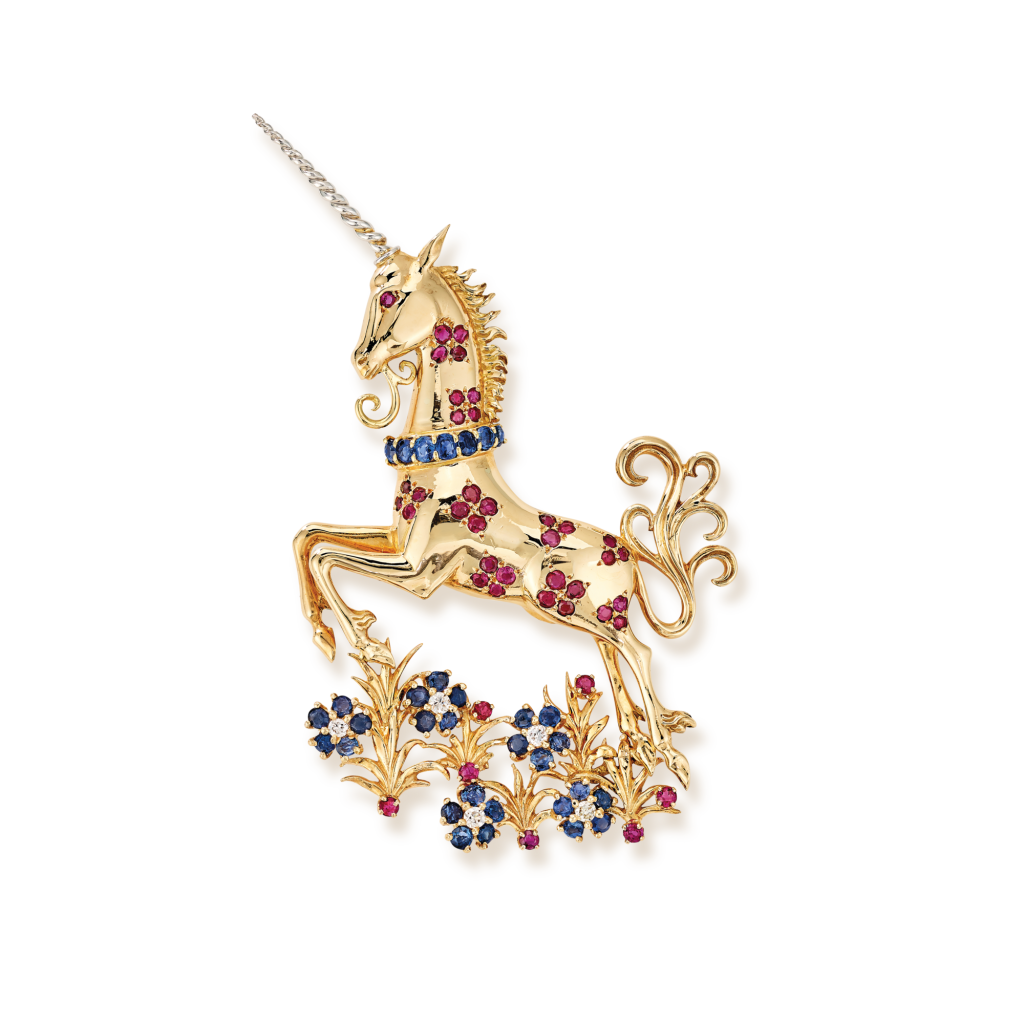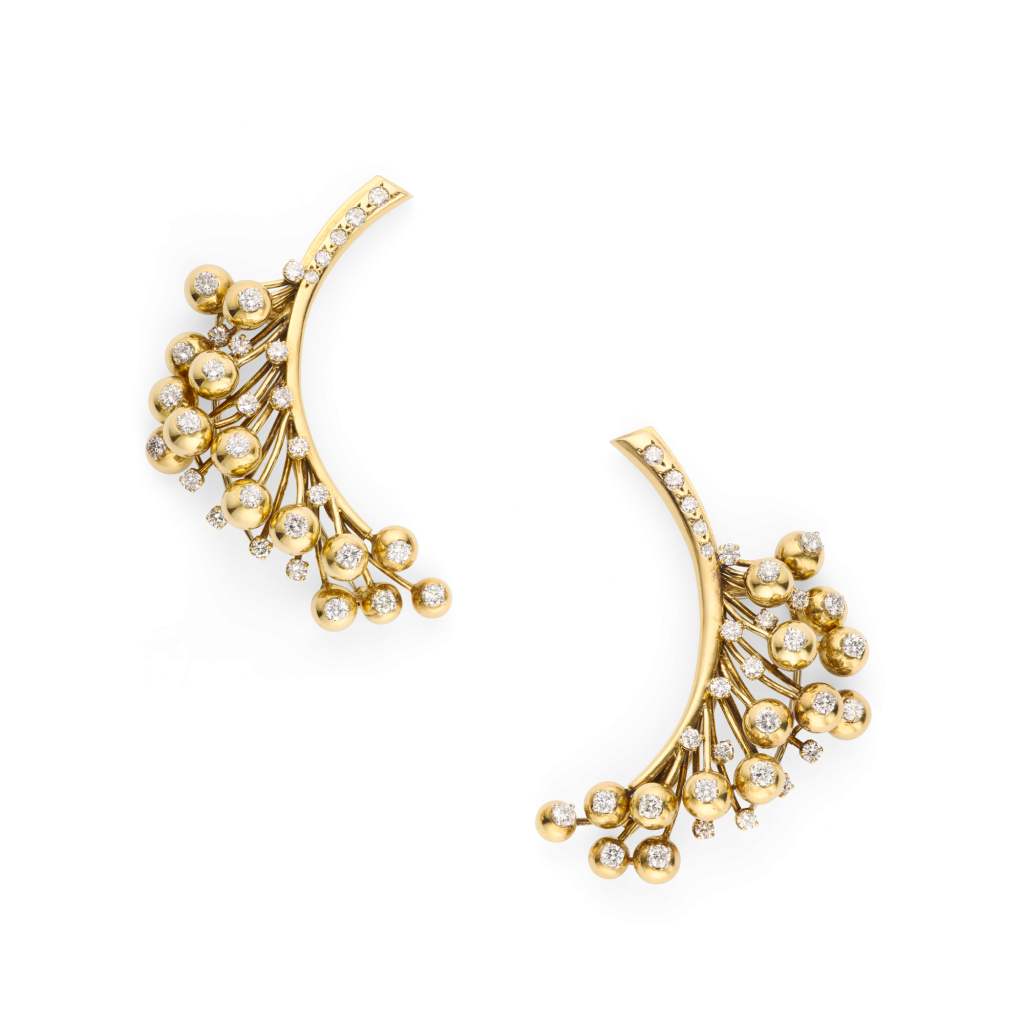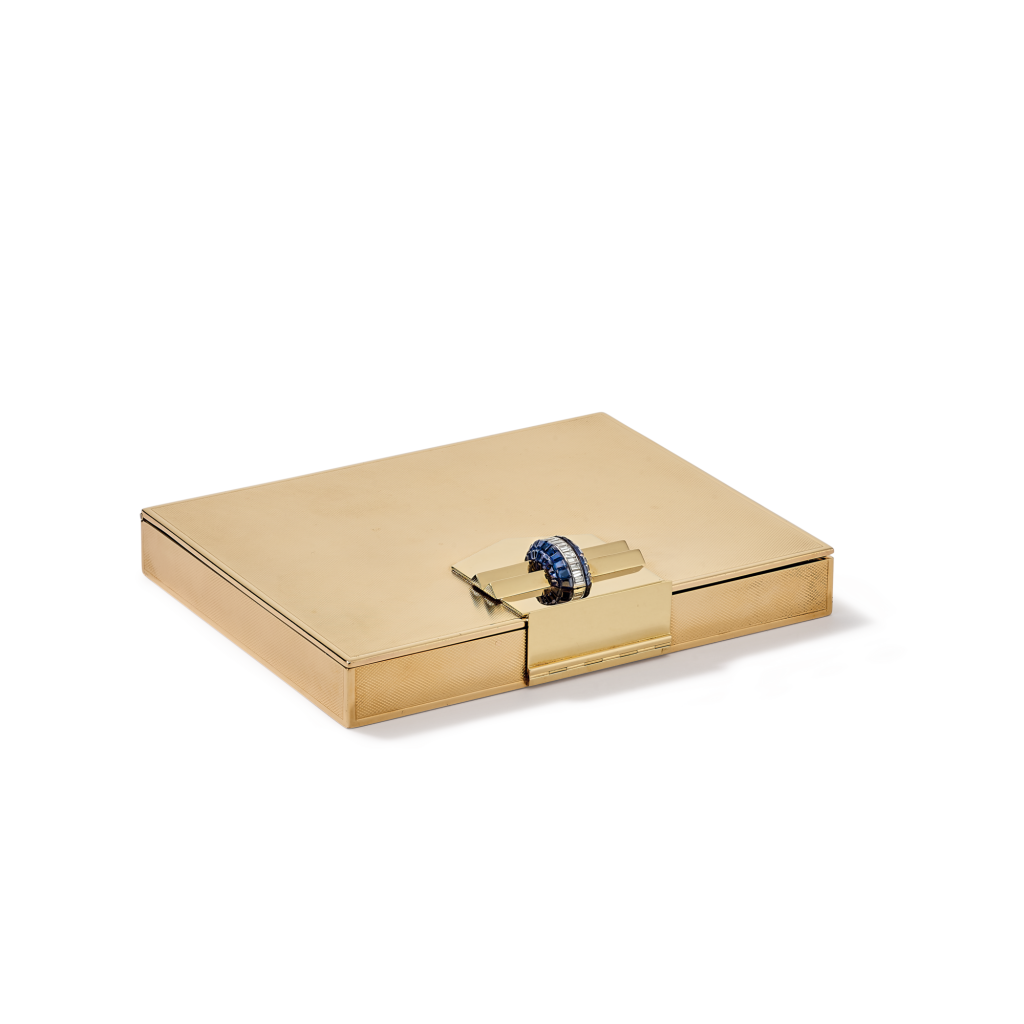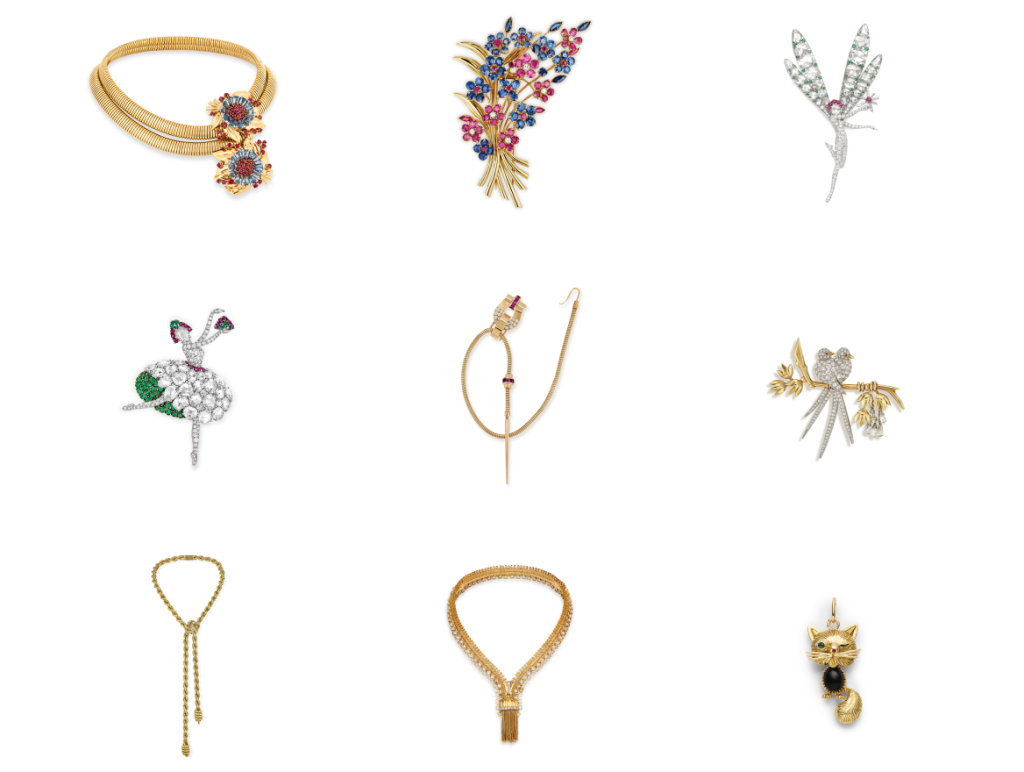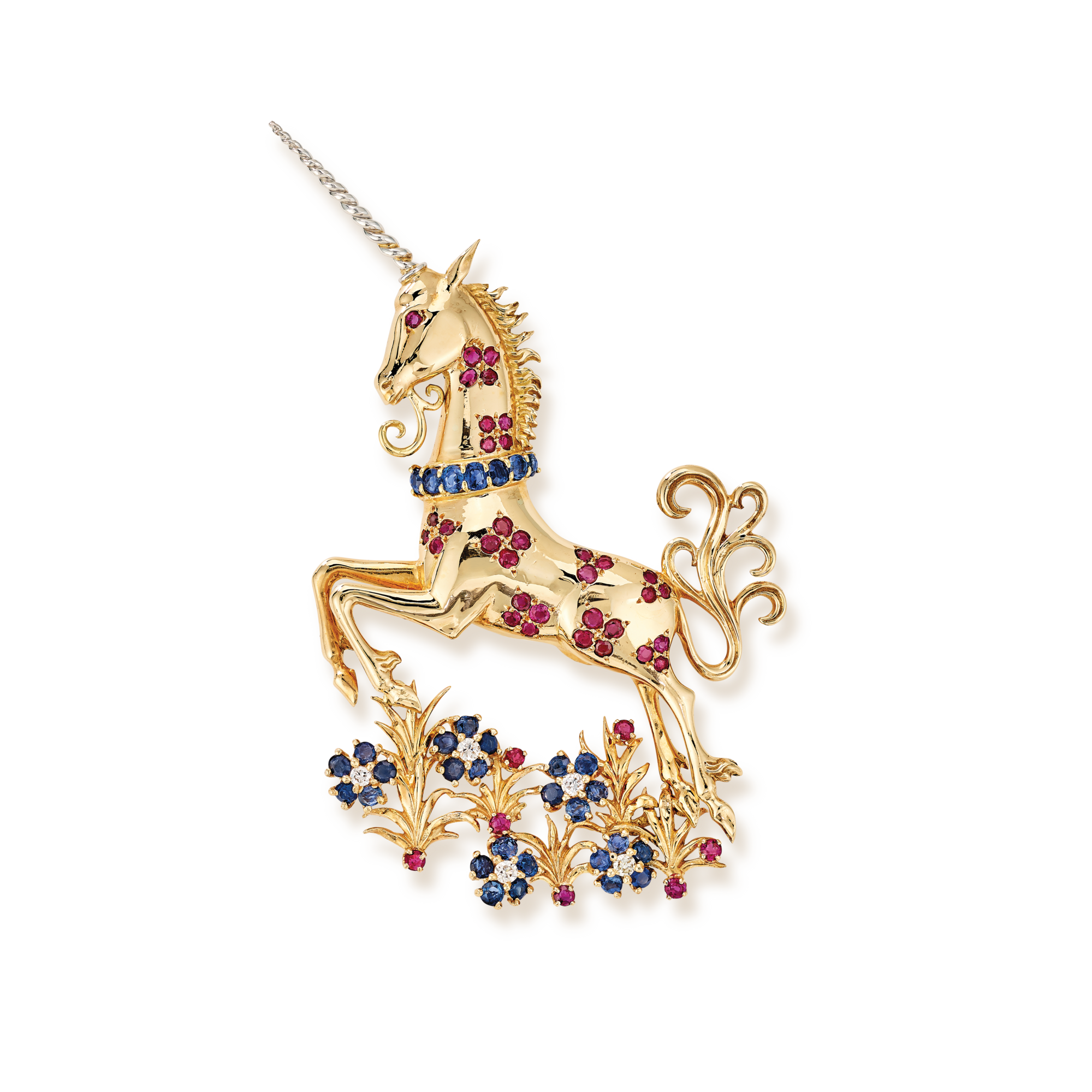
Unicorn clip
Creation details
- Creation year 1948
- Stone Diamond
- Stone Ruby
- Stone Sapphire
- Material Gold
- Usage Clip
- Dimensions 91 × 50 mm
In 1948, Van Cleef & Arpels created the Unicorn clip, illustrating the revived interest in the arts of the past and in particular, their wondrous subject matter. This clip was inspired by one of the famous Unicorn Tapestries1Van Cleef & Arpels advertisement, undated. Paris, Van Cleef & Arpels Archives., seven late fifteenth-century works conserved in the Metropolitan Museum of Art in New York.
The mythological animal in this clip is seen rearing up above a bed of claw-set sapphire, diamond, and ruby flowers with yellow gold foliage. The unicorn’s polished yellow gold coat is dotted with quatrefoil motifs depicting flowerheads composed of star-set circular rubies, while a claw-set sapphire collar surrounds the animal’s neck. Its head, adorned with a ruby eye, is topped with a twisted horn of yellow gold and silver. In a second example of this clip, also in the Patrimonial Collection, the animal’s body is made of silver adorned with various precious stones.
Historicism tinged with fantasy
Early Renaissance tapestry also inspired a project for a box, as seen in a 1940 gouaché conserved in the Maison’s archives. Its yellow gold lid is covered in a carpet of flowers reminiscent of millefleurs tapestry, with ruby, sapphire, and emerald flowers on an engraved background. The unicorn, highlighted with star-set diamonds, is seen resting in an enclosure, tied to a tree with a rope. The choice of subject, taken from the medieval bestiary, underlines the renewed taste for the revivalist repertory, as well as for themes of the imaginary.
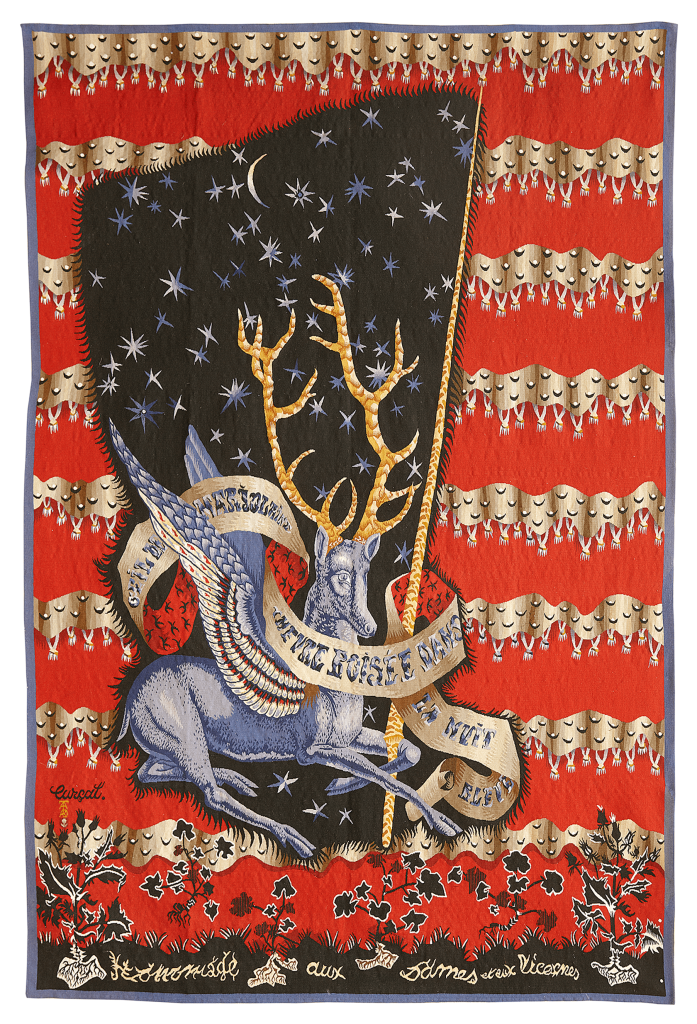
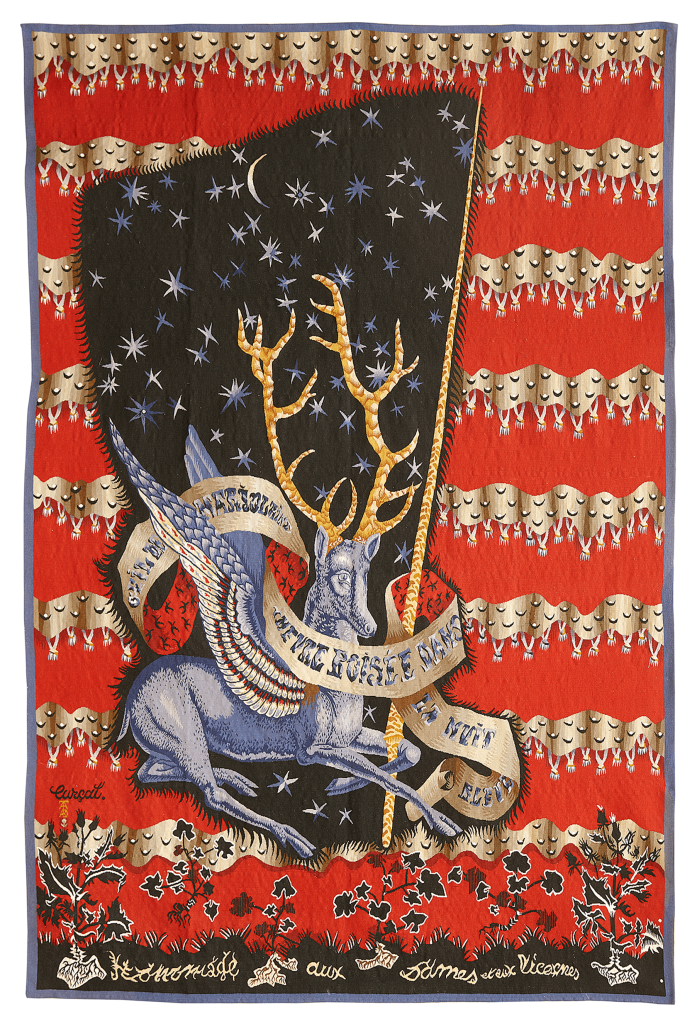
The influence of the Middle Ages and the Renaissance
The Unicorn clip is entirely in keeping with the re-emergence of revivalism that characterized the 1940s. The reference to works from the Middle Ages and early Renaissance, notably to tapestries of the fifteenth and sixteenth centuries, is seen in the work of other artists of the period like Jean Lurçat. He drew upon the chimeric bestiary of medieval tapestries2Christiane Naffah-Bayle, Jean Lurçat, 1892–1966 (Milan: Silvana Editoriale, 2016), 203–211.—the Apocalyse Tapestry in the Château d’Angers and the so-called Lady and the Unicorn tapestry3Conserved at the Musée de Cluny – Musée national du Moyen Âge, Paris.—in his Tribute to Women and Unicorns. The Unicorn clip illustrates a similar interest for the arts of that period, and heralds a desire for the wondrous found in the Maison’s jewelry designs in the 1950s.
To go deeper
